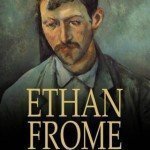Written Text Example for Multimodality
The project I have in mind is in favor of multi-modal use of technology to enhance the original point of the written text and I believe it is important in order for the point to be without question and perfectly clear, as many modes should be in play as/if possible. The idea is not without a question of the original point be able to stay in place. My idea is to demonstrate in timeline fashion how conveying an idea and or story, adaptation to newer technology and its use can further make that point. The question is when say a story evolves from the pages of a novel to a screen adaptation, can the original emphasis be lost in the new form.
For example in my Eng. 465 class, we have read the original novel and then watched the movie adaptation, where I have noticed what was emphasized in the novel became a background theme in the movie. Example in Color Purple, the novel’s point of an untold perspective of women in the early to mid-nineteen hundreds, changed to a different emphasis of just a tale of the time. I feel the importance of the author’s work became diluted in the film version. Another example is in contrast to the last Ethan Frome by Edith Wharton, which really keeps the author’s main theme alive and really makes an impact with the music choice, special effects, images created, and character enhancements. It’s this point of added Multimodality use that serves as an example for use in education.
My project is to take a look at a classic piece of literature and through a process of viewing its evolution in time if the original point is intact after the mode of communication is changed. The piece I have in mind is the work of Mary Shelly, her Frankenstein. The many adaptations include stage, silent film, talkies, and every time technology was advanced changes were made and even though many hands have touched the story I think Shelly’s main idea of the story remains intact. The story line has been clearly portrayed and easier to understand.
The project itself will make use video and if anyone has not committed to a project I would welcome the help.
